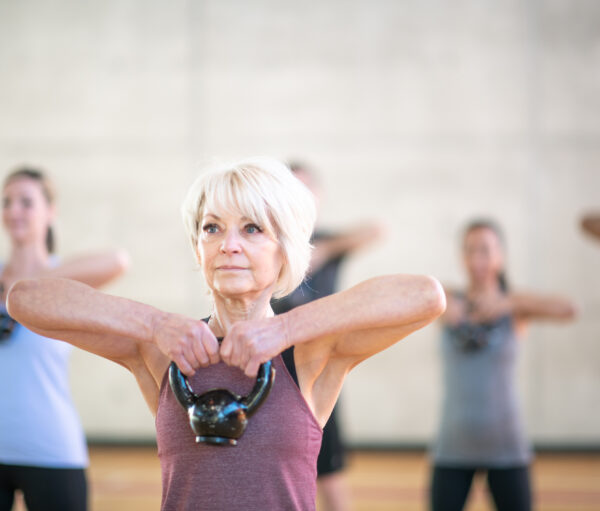Why Weight Training is Essential for Older Adults—And How to Start Small

As we age, staying active and maintaining strength becomes more important than ever. But for many older adults, the idea of starting a fitness routine—especially weight training—can feel daunting, particularly if they haven’t kept up with regular exercise in recent years. The good news is that weight training is one of the most effective ways to improve overall health and quality of life for older adults, even for those who are new to exercise. New research from State University of Campinas (UNICAMP) in São Paulo, Brazil, suggests that weight training can help protect the brains of older adults from dementia.
“A characteristic of people with mild cognitive impairment is that they have volume loss in some brain regions associated with the development of Alzheimer’s,” said researcher Isadora Ribeiro. “But in the group that did strength training, the right side of the hippocampus and precuneus were protected from atrophy. This result justifies the importance of regular weight training, especially for older people,” she highlighted.
Other benefits of weight training for older adults
Weight training isn’t just for bodybuilders or athletes. In fact, it offers numerous benefits for older adults, including improved:
- Muscle mass and strength
- Bone health
- Balance and coordination
- Metabolism
- Mental and emotional well-being
- Sleep
You might be thinking, “I’ve never worked out before” or “I’m too old for weight training.” The truth is, it’s never too late to start, and you can begin with small, manageable steps. Here are some tips to get started with weight training—even if you’ve never done it before:
- Start with body weight exercises
If you’re brand new to weight training, start by using your own body weight for resistance. Exercises like squats, lunges, wall pushups, and standing leg raises can build strength without the need for weights. These movements target key muscle groups and can help prepare your body for more advanced weight training.
- Use light weights or resistance bands
When you’re ready to introduce weights into your routine, begin with light dumbbells,resistance bands or even canned foods. Resistance bands are a great option because they provide gentle, adjustable resistance, and they’re easy to use at home.
- Include rest days
Rest is an important part of any fitness routine, especially when you’re just starting out. Your muscles need time to recover and rebuild after weight training. Aim for 2-3 days a week of strength training, with rest or low-impact activities (like walking or swimming) in between.
- Seek professional guidance (if needed)
If you’re unsure how to start or if you have specific health concerns, consider working with a personal trainer who specializes in training older adults. A professional can help you learn proper form, ensure you’re lifting safely, and design a personalized workout plan that suits your goals and abilities.
- Start slowly and listen to your body
It’s important to start slow. Don’t rush or try to push yourself too hard too soon. If you experience pain (other than normal muscle fatigue), it’s a sign you should stop and rest. Weight training should never cause sharp pain.
- Track your progress
As you get stronger, you’ll likely notice improvements in your strength and energy levels. Track your progress by noting how many repetitions or sets you’re doing, or how much weight you’re lifting. Celebrating small wins along the way will help keep you motivated.
Weight training is an incredibly effective way to enhance strength, bone health, balance, and overall well-being—no matter your age. The key is to start small, stay consistent, and listen to your body. Whether you’re lifting light dumbbells or using resistance bands, the benefits are significant and it’s never too late to begin.
This article is not intended to replace the advice of your healthcare provider. Always consult with a physician before beginning any new fitness program.
Source: IlluminAge Communication Partners


